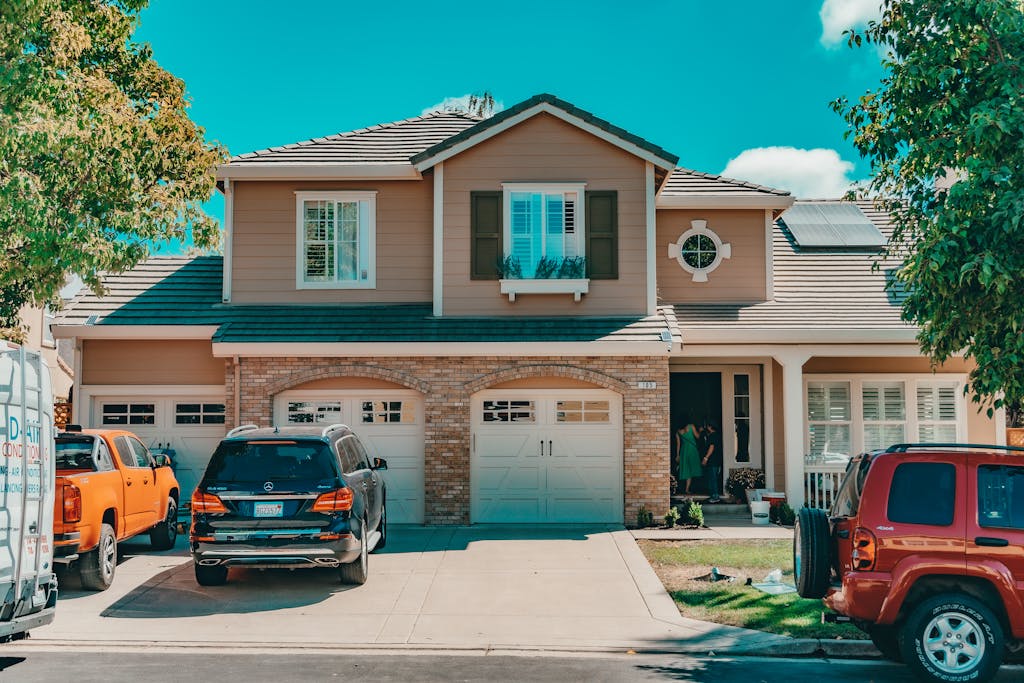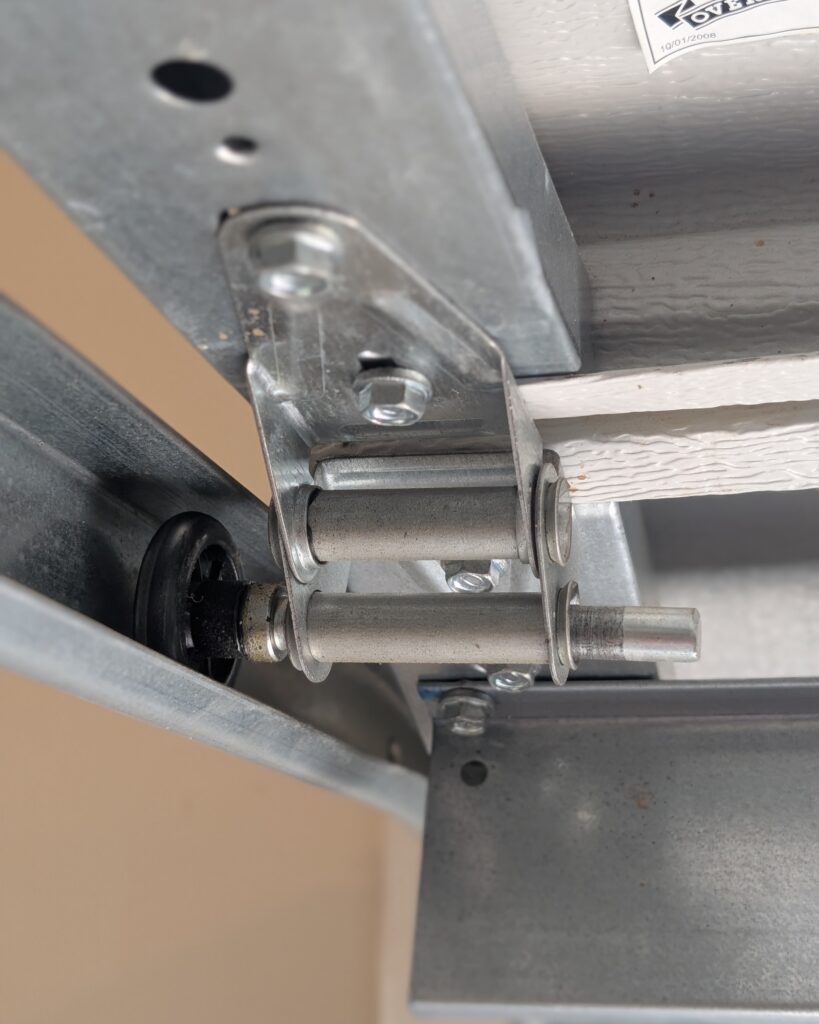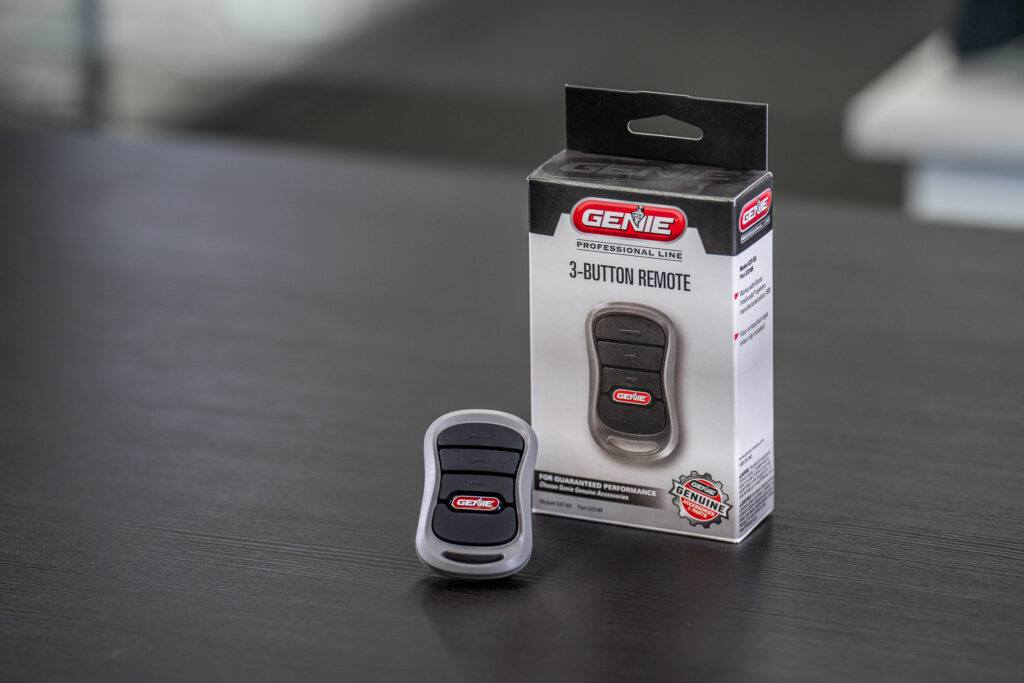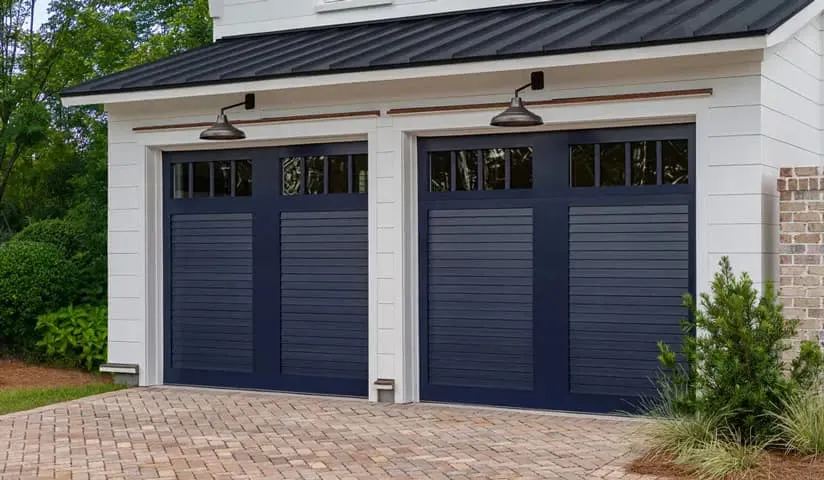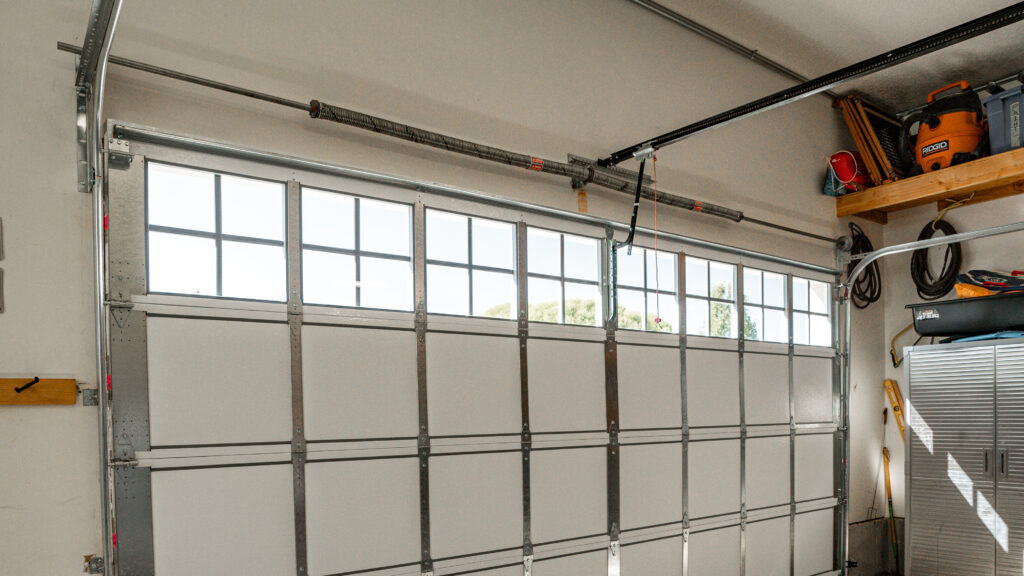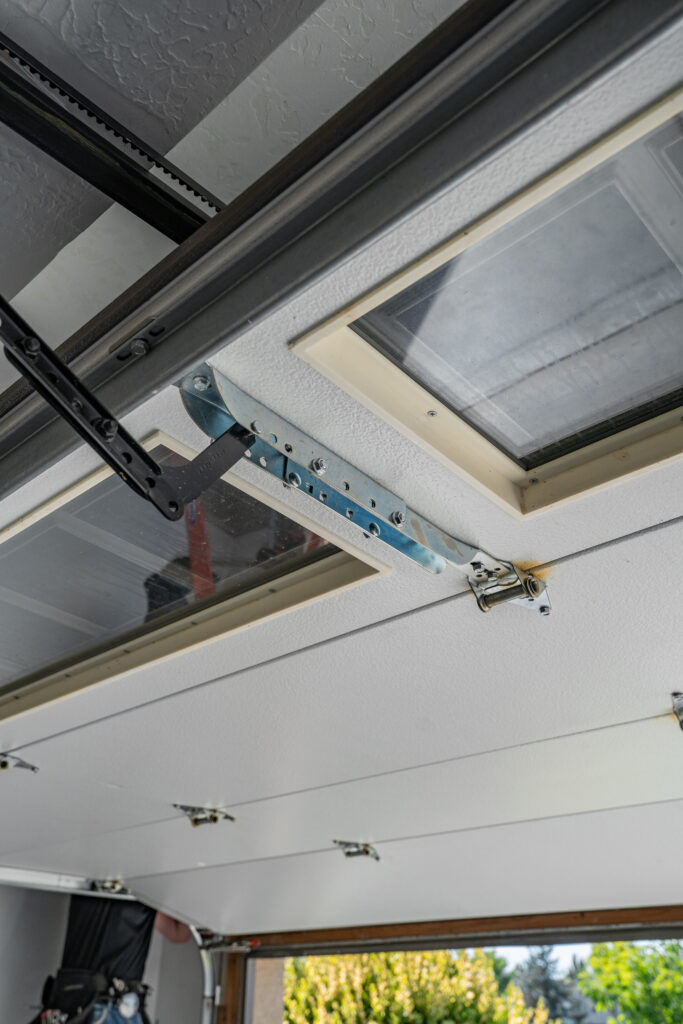Garage Door Openers: Selection, Installation & Smart Features
Automatic garage door openers have transformed home convenience and security. This guide covers everything from basic garage opener components and drive systems to advanced smart features and safety measures, helping you choose, install, and maintain the ideal opener for your garage door. Learn about horsepower, drive types, and modern technology integrations, ensuring a reliable and efficient garage door system.
By: Kelly Larson | Published: April 29, 2025
Find Garage Door Repair Services
Get a fast & free quote | Schedule your service today
Gone are the days of manually opening and closing your garage door. Well… mostly. Manual garage door openers still exist, but they’re a rare breed. Automatic garage door openers are standard in most homes, and their tech, performance and safety features are more advanced than ever. Our soup-to-nuts guide covers everything from the basic components of automatic garage door openers to the impressive suite of smart features they offer.
>>Expert Advice: Find The Best Garage Door Openers
How Automatic Garage Door Openers Work: The Basics
With a push of a button, the multiple components of an automatic garage door opener go to work raising and lowering the garage door. A crucial part of the overall garage door setup, automatic openers consist of the motor unit (the box-like part hanging from the ceiling), the drive system, horizontal rail, remotes, wall units and safety sensors. Some also come with additional smart features and integrated security measures.
Essential Components of an Automatic Opener System
In order to function properly, the primary parts of an automatic opener system need to work in perfect harmony. They include:
- Motor unit: The workhorse of the system, the motor provides the necessary power to raise and lower the door. Meanwhile, its circuit board sends and receives signals to and from the remote controls, wall console and safety sensors.
- Drive mechanism and horizontal track: There are three main types of drive systems: Chain drives, belt drives and screw drives. Jackshaft and direct drives are also available but less common. They all have different benefits and drawbacks, but each is responsible for transferring the motor’s power to the door via the horizontal track.
- Remotes and wall unit: Remote controls open and close the door from around 20 feet away. The wall unit is hardwired to the motor unit and serves the same opening and closing function.
- Safety sensors: Mounted a few inches above the ground on the vertical rails, safety sensors reverse the garage door’s direction if an obstruction is detected.
Power and Performance Specifications
Automatic garage door openers need enough horsepower to lift the substantial weight of the door hundreds of times per year. Two-door garages typically require a minimum of ¾ HP, while commercial units or heavier residential doors need 1 HP or above. The heavier the door, the more HP needed.
Most standard garage doors move at 6 to 12 inches per second, and the opener’s cycle rating estimates how many cycles (1 open + 1 close = 1 cycle) it can complete during its useful life. Your specific unit’s details can be found online or in the manufacturer’s guide.
Types of Garage Door Openers: Choosing the Right Drive System
Different drive systems serve different needs. Is quiet performance at the top of your priority list? A belt drive is your best bet. Got a heavy door or a big truck? You might need the extra space that a jackshaft unit provides. Let’s take a closer look at each drive type.
Chain Drive Openers: The Reliable Workhorse
Chain drives are the most common type of drive system. They’re durable, reliable, widely available and inexpensive compared to other types. These standout features make chain drives the top choice among homeowner’s, but keep in mind that they’re noisy and can often be heard in adjacent rooms inside the house.
Belt Drive Openers: The Quiet Performance Option
A steel-reinforced rubber belt is responsible for the smooth, quiet performance that belt drives provide. They’re more expensive than chain drives, but a worthy upgrade if your garage is under or next to a bedroom.
Expert Tip>>>Belt Vs. Chain Drive Openers
Screw Drive, Direct Drive and Jackshaft Systems
Screw, direct and jackshaft drive systems are less common in residential homes but are still out there if one of them is a better fit for your situation.
- Screw drives: A threaded steel rod acts like a screw to power the door’s movement. They’re smooth and quiet, but extreme temperatures can cause the screw to expand and contract which can eventually lead to poor performance.
- Direct drives: A direct drive system’s motor unit moves across an immobile chain instead of the chain moving through the unit. It’s one of the quietest drive systems of the bunch, but they’re pricey and less widely available than chain or belt drives.
- Jackshaft drives: Jackshaft drives are mounted on the side of the gage door. They save ceiling space and are more difficult for thieves to tamper with, but they’re the most expensive option and professional installation is a must.
Smart Garage Door Openers: The Connected Home Evolution
Along with their safety features, smart features are a huge differentiator between manual and automatic garage door openers. Some modern units feature integrated cameras and technology that allows you to connect with your smart-home ecosystem, including Google Home, Amazon Alexa and Apple HomeKit. Through an app, you can control the door remotely, receive security alerts and automatically open and close it at specified times.
If your opener doesn’t come with these integrated features, most major brands are compatible with MyQ technology. Connecting MyQ products like remotes, cameras and keypads to your home’s WiFi will effectively turn a basic unit into a smart unit.
Essential Safety Features in Modern Garage Door Openers
Under a 1993 rule created by the Consumer Product Safety Commission, all residential garage doors need to be equipped with safety sensors. The most common type detects obstructions with an infrared beam and reverses the direction of the door when triggered. Safety sensors and security enhancements are critical for reducing the risk of injury or even death from getting trapped under a garage door.
Photo Eye Sensors and Auto-Reverse Technology
Photo eye sensors—sometimes called infrared sensors—are legally required in order to comply with safety standards. They’re mounted on the vertical rails about six inches above the floor and face each other. One sensor sends an infrared signal and the other receives it. If a person, pet or other obstruction breaks the beam, it sends a command to the garage door opener to reverse course and remain open.
Routine maintenance is easy and can be performed in a few minutes. Check for and remove any dirt, debris or spiderwebs and wipe the photo eye with a microfiber cloth. Also check for loose or damaged wires and contact a licensed electrician if any repairs need to be made. Often times homeowners schedule a garage door tune-up to keep all components of their garage door functioning properly.
Rolling Code Technology and Security Enhancements
When you press the button on your remote control, it sends a code to the garage door opener that triggers it to open or close. Older systems use a fixed code that stays the same over time, making it more susceptible to interception by intruders. Most modern automatic garage door openers, however, are equipped with rolling code technology. The enhanced safety feature creates a moving target by generating a brand new code each time the door is open or shut.
If you’re integrating the opener with your smart home or controlling it through an app, some units feature encrypted communication between the opener and the app. You could also enable two-factor authentication or require a PIN for access. Popular brands like Chamberlain, LiftMaster and Craftsman are known for incorporating the latest encryption and safety features to their openers.
Selecting the Right Opener: Matching Power to Your Door
Failure to choose the right automatic garage door opener for the door itself can result in poor performance, safety hazards and premature wear and tear. Familiarizing yourself with the opener’s capabilities can save you from potential hassles down the road.
Understanding Horsepower and Lifting Capacity
Horsepower ratings indicate the strength and overall capabilities of the garage door opener’s motor. A ¼ or ½ HP motor should be more than adequate to lift lightweight, single-car garage doors. Two-car garages should be connected to ¾ or 1 HP motors to ensure safe and smooth operation. Heavier materials like wood and fiberglass may need a stronger motor to get the job done, as will most commercial and specialty doors.
Speed Settings and Soft Start/Stop Features
Dialing in the optimal force and opening speed for your garage takes a bit of trial and error, but it’s crucial for the longevity of the system. The adjustment controls—one that affects force and one that affects speed—can typically be found on the motor unit. Make small adjustments to each, testing the door’s speed after each one, until it’s how you want it. And keep in mind that a door that opens too fast can lead to unnecessary damage over time.
Models equipped with the soft start/stop feature are much quieter and more efficient than those that don’t. Instead of abruptly (and loudly) opening and closing the door at the same speed, soft start/stop openers start the opening or closing cycle slowly, speed up mid-lift, and slow down again before coming to a stop. This reduces wear and tear over time and results in excellent noise dampening.
Upgrading from Manual to Automatic: What To Know
If you’re upgrading to an automatic garage door opener from a manual one, you’ll need to consider several factors to determine which of the old components can be used with the new system and which ones are incompatible.
Compatibility Assessment and Preparation
Many older garage doors are compatible with new openers. To determine if yours is, start by identifying the specs of the old door, including its weight and material composition. Compare these with specifications and requirements of the automatic garage door opener to see if they can be used together with the type of garage door on your home.
If the old door and its springs and hardware are warped, rusted or damaged in another way, the safest thing to do is replace it with a new one. Garage.com can put you in touch with a professional installer in your area to assist with assessing compatibility.
Complete vs. Partial System Replacement
Never try to salvage a door with visible signs of damage like rust, warping and cracks, or if it’s at the end of its lifespan—typically 15 to 30 years depending on the material and how well it’s maintained. If the tracks, springs and other components are just as damaged, it’s time to consider a complete replacement.
But even if your old setup isn’t in the best shape, there may be some parts and hardware you can still use with a new opener system. You could also save some cash by installing the simpler components yourself. Installing parts like force-loaded springs and heavy door panels is extremely dangerous and should be done by a professional.
Common Questions About Garage Door Openers

Get Your Free Quote and Schedule Your Garage Repair Today
Find top-rated companies for fast garage repairs and service to make sure your garage door system lasts. Get free quotes from garage door companies in your area.
Tips and Expert Advice for Your Garage
Stay informed with expert advice on garage door maintenance, garage door service, garage door replacement, and upgrades. Explore our blog for guides, troubleshooting tips, and more.
